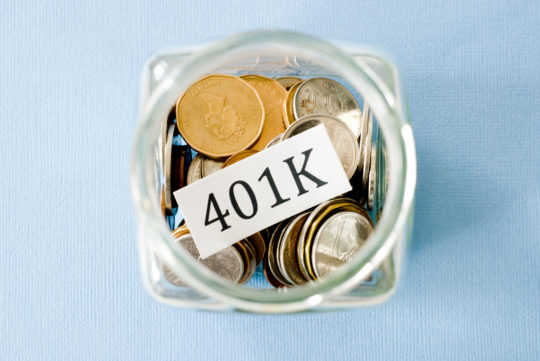What is a Solo 401(k)?
A Solo 401(k), also known as a Self Employed 401(k) or Individual 401(k), is a qualified 401(k) retirement plan for small businesses. It allows plan participants to tuck away up to $53,000 a year per person for retirement in a tax-advantaged account.
Solo 401(k)s come in two flavors: pre-tax and Roth. With the pre-tax 401(k), you skip paying tax on the year you put money in the plan, but you pay tax when withdrawing the funds. With a Roth 401(k), you pay tax on your contributions to the plan, but are able to withdraw all your future earnings tax-free.
Who Can Contribute?
If your business is a sole proprietorship or a two-person partnership, you may qualify for a solo 401(k). In order to qualify, you can’t have any employees other than yourself, your spouse, your business partner, and your business partner’s spouse. You also can’t have any part-time employees who work more than 1,000 hours a year.
Even though the plan is a called a “Solo” 401(k), you can set up a plan for both you, your spouse, your business partner, and your business partner’s spouse.
When is a Solo 401(k) a Good Idea?
Solo 401(k) plans are ideal if you intend to set aside a large sum of money. With an individual 401(k), you are allowed to save for retirement both as an employee or as an employer, which usually enables people to contribute more than they would with any other retirement plans.
How so? As an employee, you can put away as much as $18,000. As the employer, you can contribute an extra 25% of your pay, with a limit of $53,000, which includes your employee contribution.
Keep in mind that these contributions are optional, so you can save the maximum during years where you’ve made excess income and then not contribute during years where your income is scarce. If you add your spouse to the plan, and collectively you have a stellar income year, you could save a total of $106,000. If both of you are 50 years old or above and qualified for catch-up contributions of $6,000 per person, the total climbs to an impressive $118,000.
Another advantage to a Solo 401(k) plan is that you are still able to contribute to an Individual Retirement Account like a Roth IRA. If you choose to use a SEP or SIMPLE IRA to invest for retirement, you aren’t eligible to save an additional $5,500 in a Roth or pre-tax IRA.
When You Can Get Access to Your Solo 401(k)
Usually, if you have a pre-tax retirement account, you have to keep the deposited monies in your retirement account until you reach 59 1/2 years of age. If you withdraw money before that age, then you’ll have to pay a 10% early withdrawal penalty, in addition to the income taxes you’ll have to pay on the withdrawn amount.
With a Roth retirement account, you are able to withdraw contributions at any time. You will pay tax and penalties on earnings.
However, there are a few exceptions to the rule. You may be allowed to take money out of your account penalty-free before age 59 ½ if it’s used for:
- Qualified medical expenses
- First time home purchase
- Payments you may need to make to prevent eviction or foreclosure
- Higher education expenses
There are also other options for gaining access to the funds if you really need it.
Getting Money from Your Solo 401(k) Beforehand
Normally, the best solution is to take out a Solo 401(k) loan, that uses the accumulated balance of the account as collateral it to borrow up to half of the total balance so long as the loan doesn’t exceed $50,000. The remaining balance is still invested in your plan, with tax-deferred investment earnings growth.
Your other option is just to withdraw money from your individual 401(k). Just remember that if you choose to do so before the age of 59 ½, you’ll owe a 10% early withdrawal penalty. There are, of course, exceptions to this rule as well. The IRS will allow the 10% penalty to be waived for specific “hardship withdrawals” like funeral expenses or large high medical bills that you have to pay out-of-pocket.
How You Should Invest Your Solo 401(k) Money
When your investment goals are long-term, as with a retirement plan, you generally want to have some exposure to stocks, because they have the best chance to generate returns that beat inflation. Adding some cash or bonds to the mix can help decrease the overall instability of your holdings.
Does a Solo 401(k) Make Sense for You?
These plans are attractive if you intend to sock away large sums. You can contribute up to $53,000 in 2016. But 401(k) plans require more paperwork than SEP IRAs. If your account balance exceeds a certain amount, you have to file a special tax return for the plan, which can add slightly to tax-preparation costs and hassles.
There is no better way to secure your future than using a firm that can properly manage your investments. Please contact us to help you create a stable and reliable financial plan.

